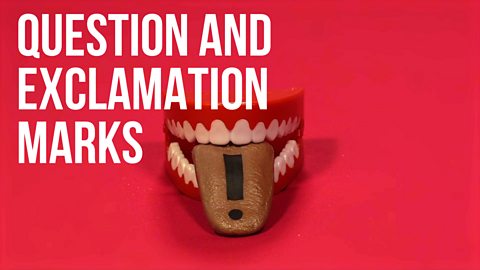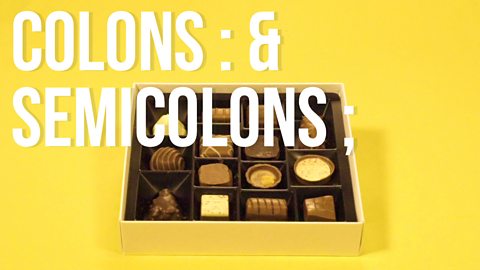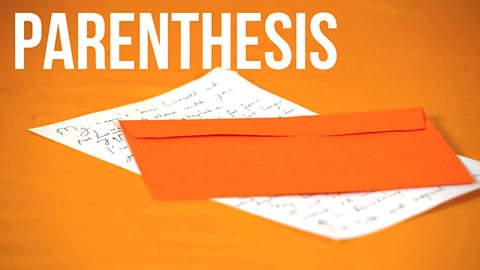Full stops and commas are punctuation marks. A full stop ends a sentence. A comma shows a pause, breaks up a list or separates part of a sentence.
This technique should be familiar to you as you will have studied it at 3rd level. Use this guide to revise and check your understanding.
What are full stops and commas? How and why would you use them?
Full stops and commas.
Full stops and commas are punctuation marks.
A full stop ends a sentence.
A comma shows a pause, breaks up a list or separates parts of a sentence.
Full stops are easy. They always go at the end of a sentence.
I love tennis.
I love rugby.
In fact, I love lots of sports.
But I’m not so keen on football.
A comma could be used to link these sentences and form a list.
I love tennis, rugby, and lots of other sports, but not football.
Be careful though! Commas can completely change the meaning of a sentence.
‚ÄúLet‚Äôs eat, Lucy!‚ÄĚ means you are inviting Lucy to eat.
‚ÄúLet‚Äôs eat Lucy!‚ÄĚ means you are about to eat Lucy for dinner!
If you aren’t sure where to put a comma, try reading the sentence out loud.
A comma is where you tend to pause for breath, before continuing.
In her poem Originally, Carol Anne Duffy uses full stops and commas to emphasise that growing up is about change.
‚ÄúAll childhood is an emigration. Some are slow, leaving you standing, resigned, up an avenue where no one you know stays. Others are sudden.‚ÄĚ
The short sentences at the beginning and end of this passage cause impact, and the list in between reinforces the points that the short sentences are making.
The structure of the sentences also reflects the point being made.
‚ÄúOthers are sudden‚ÄĚ is short and sharp, whereas the middle sentence is slow and long, emphasising the time taken for some changes to take place.
Once you get your head round full stops and commas, there will be no stopping you.
Full stops
Full stops always go at the end of a sentence:
- 'I love tennis.'
- 'I love rugby.'
- 'I love lots of other sports.'
Sentences
Full stops can be used to create different sentence lengths and types. These can can have different effects on the the reader.
- Longer sentences may be used for a more detailed description or an explanation.
- Shorter sentences may be used to have impact, reflect the point that is being made or build up tension: 'She stopped suddenly.'
Fragments
Sometimes writers don't even use full sentences. Sentence fragments often help to emphasise a point, create drama or show surprise, but they are not complete sentences:
- 'She looked as carefully as she could, but found nothing. Absolutely nothing.'
- 'Imagine this. You're trapped. It's dark. It's cold.'
Try to consider how you can add impact to your own writing by using different sentence lengths and types.
Commas can be used to:
- create a list
- show a pause
- break up a long sentence into smaller chunks
Lists
Lists can connect lots of related items or topics using commas: 'I love tennis, rugby and lots of other sports.'
If a list is present, look at the order in which the points are listed. If they lead up to the most important item at the end, there is a build-up to a climax: 'Jessica wanted to pass her exams, go to University and become a doctor.'
Pauses
Be careful! Commas can completely changed the meaning of a sentence.
- 'Let's eat, Lucy.' means you are inviting Lucy to eat.
- 'Let's eat Lucy.' means you are about to eat Lucy!
If you're not sure where to put a comma, try reading the sentence out loud. A comma is often where you would pause for a breath before continuing.
Breaking up longer sentences
In a long sentence, you can use commas to separate out extra information and make the sentence easier to read.
A clause is the building block for a sentence. Commas can be used to break up sentences that have more than one clause and make them easier to read.
- 'When Josh saw the food, his stomach started to grumble.'
- 'Josh used to stay up late playing video games, but then his mum found out.'
Both these sentences have a subordinate clause. Subordinate clauses do not make sense on their own. These clauses need the main part of the sentence to make sense, so they are connected with a comma. The comma shows that they are closely connected to the main part of the sentence.
More on Understanding, analysing and evaluating
Find out more by working through a topic
- count13 of 18

- count14 of 18

- count15 of 18

- count16 of 18
